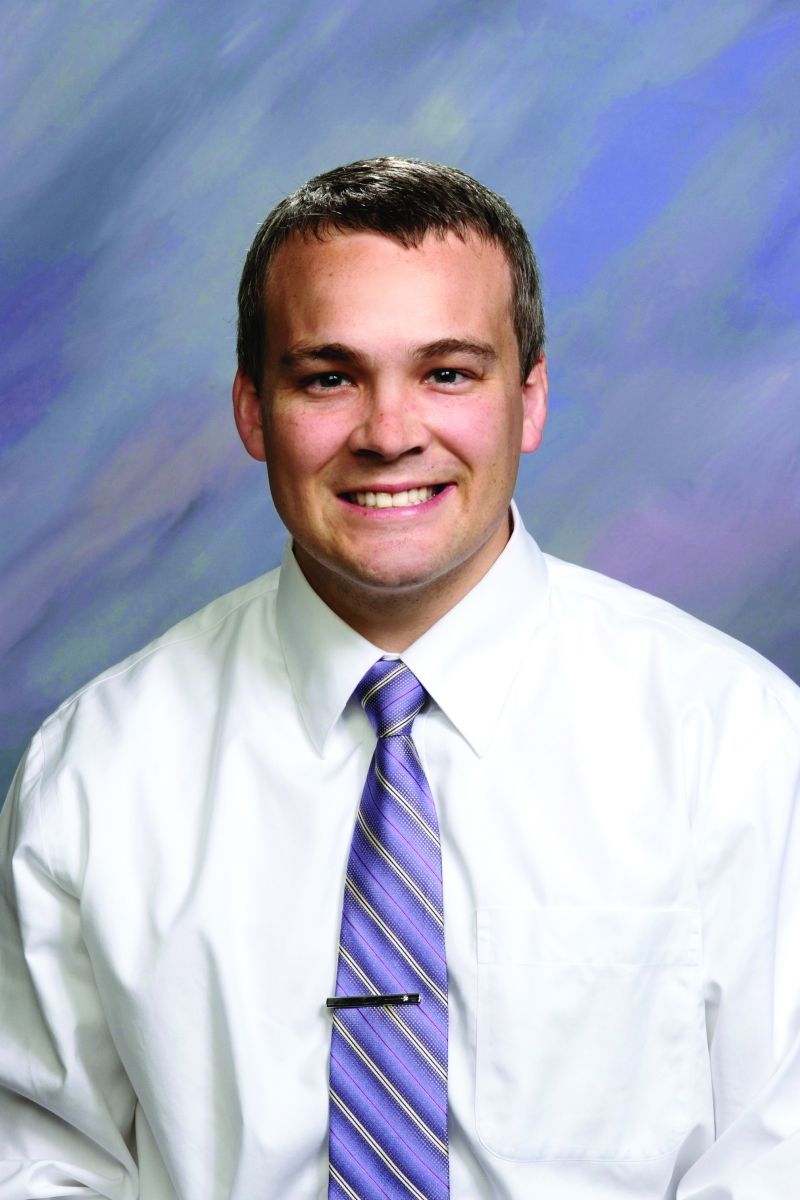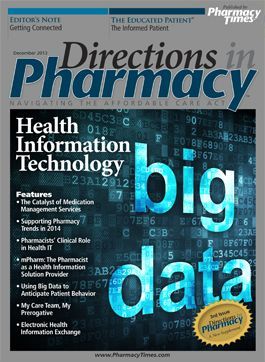Publication
Article
Pharmacy Practice in Focus: Oncology
mPharm: The Pharmacist as a Health Information Solution Provider
Pharmacists can employ new tools to educate and engage patients while maximizing outcomes.


Pharmacists can employ new tools to educate and engage patients while maximizing outcomes.
Mobile health is coming to a pharmacy near you and it will lead to the development of mPharm. The “m” in front of words like health or technology simply implies “mobile.”
This “m” prefix has important implications, as it has become part of the normal lexicon in this emerging field. Mobile health—or mHealth—is coming to pharmacy and is driving the development of mPharm. In the emerging mHealth world, mPharm describes the intersection of pharmacy and mHealth. mPharm is an opportunity for pharmacists to take on new roles in health care by enhancing interactions with patients, caregivers, and other health care providers—and it promises to improve outcomes.
The foundation for mTech is the mobilized operating system (ie, iOS, Android, or Windows). From the patient’s perspective, the central access point for this platform is their phone or, increasingly, their tablet. Peripheral gear can be added onto the system. These extensions are analogous to the contributions of the mouse, keyboard, speakers, and printers to the core of a home computer. The increased linkages of these devices to larger networks are part of a larger megatrend referred to as the “Internet of Things.”1 At the heart of mHealth-centric networks are mobile apps. For mHealth, mobile apps enhance the patient or provider interface to the network of medication information and can vary in their robustness and utilization of additional gear.
Prescription management applications are being developed across the spectrum of retail pharmacy. Companies such as Walgreens and RiteAid have developed their own applications, while many independent pharmacies have the opportunity to partner with their distributor to “go mobile” (eg, McKesson through HealthMart).2 There are also partnerships being formed between retail pharmacies and mHealth developers. Two examples are the United Kingdom—based retail pharmacy, Lloyd’s Pharmacy, which is partnering with Proteus Helius, and CVS, which is piloting an effort with GlowCap.3,4 These examples highlight the fact that community pharmacy is experimenting with a new practice model where health information solutions are at the core. Here are some categories of mobile apps that can help pharmacists understand this new model.
Engagement Apps
Engagement apps are simple applications which create reminders for the patient. The reminders can range in their complexity and scope. Some of the apps work like a calendar appointment to notify the patient when they are supposed to take a medication or when they need to go to the pharmacy to pick up their medications. Some retail outlets have used these applications to send messages to the patient to let them know that their medications are ready for pickup and provide the total cost for the medications.
Decision Support Apps
Decision support apps can vary from providing drug information to more complex payer decision support (PDS). PDS apps also vary widely in terms of their function and use patterns. PDS apps can be used by the payer once a year when they are trying to select a Medicare Part D plan or each time they are prescribed a new medication. Apps of this nature inform the patient about the expected costs for the medications they are prescribed and can help offer alternatives to make medications more affordable. These apps can visually display the information graphically, so that patients can predict when they are going to hit the “donut hole” or anticipate how much it will cost them and their payer over the year. If utilized appropriately, these apps can engage a patient and provide powerful decision support.
Active Patient Interface Apps
Active apps take advantage of an activated patient who is using their device often. These apps can call patients when it is time to take a medication and survey patients about their medication experience or current health status. Information gathered includes data about side effects, activities of daily living obtained through customizable surveys, and medication adherence. This information in some applications can be sent to a patient’s selected network (ie, caregiver, family, physician, and pharmacist). Behind these applications is a sophisticated provider portal which can be used to enhance population health.
Passive Gear-Based Apps
Some apps utilize gear-like scales, glucometers, blood pressure monitors, electrocardiograms, sensors on medication caps, ingestible sensors, patches, and many other utilities to gather information about the patient and send it out to the appropriate persons. The word “passive” is used because it takes an activity that the patient already is doing for their care and transmits it effortlessly to a cloud. Once the data are in the cloud they can be used by the patient or caregiver to make decisions.
Combination Apps
Apps can include passive and active features to enrich the data gathered about a patient. Many of these apps can be customized to the patient and provide preferences that enhance adherence to the app.
Pharmacists As Health Information Solution Experts
In an earlier high-level summary, including important considerations for design and app development, the issue of who will help patients is addressed. With physicians spending only 49 seconds talking about medications with patients,5 how will the providers incorporate time for activating patients with appropriate health information solutions? The pharmacist is strategically situated as a conduit to activate patients with health information solutions.
Patient engagement is being called the blockbuster drug of the 21st century.6 As with all drugs, there is a need for the pharmacist in the medication use process. Incorporating safe and effective product verification, distribution, dispensing, and patient education regarding both the medication and applications being prescribed or used by the patient will continue to be a patient need optimally suited for pharmacist fulfillment.
Selecting the right app—for the right device, programmed the right way, and optimized for the right patient—will be critical to maximizing outcomes for an engaged patient. The patient’s unique relationship with the pharmacist will allow for the objective selection of the best mPharm solution to meet their particular needs.
The pharmacist can serve as a competent educator—being friendly, accessible, and informed about advances in mHealth literature and product development. Information-based health solutions being dispensed from community pharmacies will be an exciting part of pharmacy’s future.
Adam Wolfe, PharmD, MS, BCPS, serves as the controlled substances and data analytics coordinator at the University of North Carolina Medical Center. Adam is charged with fostering a pharmacy business intelligence culture through utilization of data mining, warehousing, and advanced analytics. He is responsible for controlled substance operations, proactive drug diversion, and regulatory compliance. Adam graduated from the UNC Eshelman School of Pharmacy Master of Science in pharmaceutical sciences program and a 2-year health-system pharmacy administration residency at UNC Hospitals and Clinics. Adam received his Doctor of Pharmacy from the University of Utah Skaggs College of Pharmacy in Salt Lake City, Utah. He has experience with acute and ambulatory care, surgical services, informatics, automation, and data analytics.Ryan Moore, PharmD, MS, serves as a clinical pharmacy specialist at Cornerstone Health Care in High Point, North Carolina, a multi-specialty physician-led accountable care organization. He is an embedded member of the multidisciplinary care team in the heart function clinic, where he is responsible for the development and implementation of population-based medication management programs designed to meet the triple aim. He completed a 2-year residency at the University of North Carolina Hospitals and Clinics in Health-System Pharmacy Administration. He graduated from the University of North Carolina Eshelman School of Pharmacy with a master’s degree focusing on health-system pharmacy administration. Throughout his residency, he focused on improving transitions of care by enhancing pharmacy services. Ryan received his PharmD from University of Nebraska Medical Center College of Pharmacy in Omaha, Nebraska.
References:
- Chui M, Löffler M, Roberts R. The internet of things. McKinsey & Company website. www.mckinsey.com/insights/high_tech_telecoms_internet/the_internet_of_things. Published March 2010.
- Comstock J. McKesson pharmacies play catch up with new app. http://mobihealthnews.com/26413/mckesson-pharmacies-play-catch-up-with-new-app. Published October 15, 2013.
- Lloyd’s pharmacies to sell Proteus smart pills, sensors. http://mobihealthnews.com/15820/lloyds-pharmacies-to-sell-proteus-smart-pills-sensors. Published January 13, 2012.
- Comstock J. GlowCaps now sold through CVS, new randomized control trial launches. http://mobihealthnews.com/20750/glowcaps-now-sold-through-cvs-new-randomized-control-trial-launches. Published March 11, 2013.
- Tarn DM, Paterniti DA, Kravitz RL, et al. How much time does it take to prescribe a new medication? Patient Educ Counseling. 72(2);2008:311-319.
- Kish L. The blockbuster drug of the century: an engaged patient. HL7 Standards. www.hl7standards.com/blog/2012/08/28/drug-of-the-century. Published August 28, 2012.







